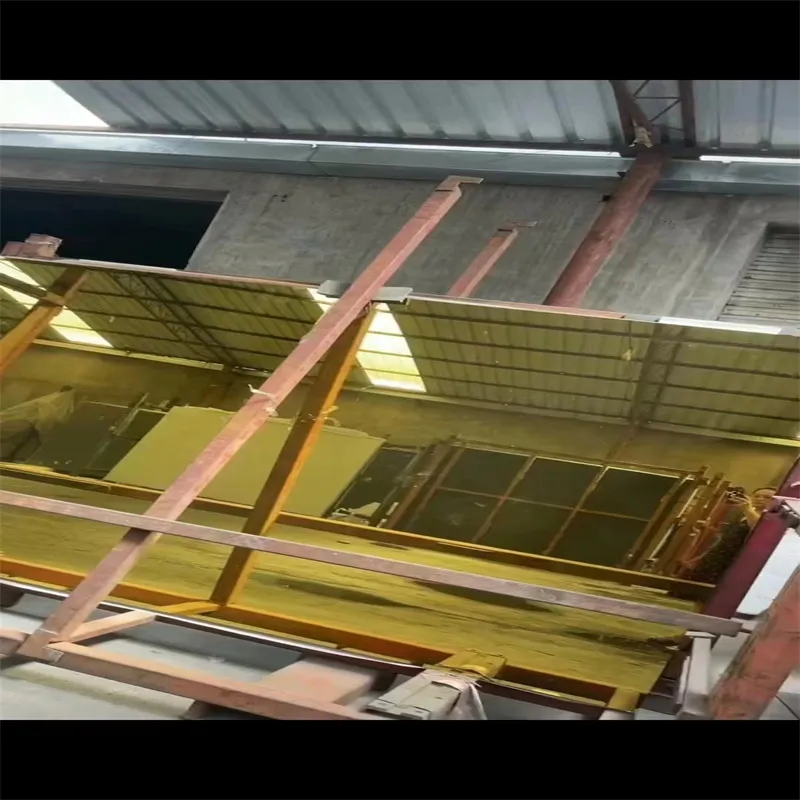Nov . 15, 2024 15:00 Back to list
tempered glass production
Tempered Glass Production An Overview
Tempered glass, also known as toughened glass, is a type of safety glass that has been heat-treated to increase its strength and resistance to thermal stress. It is widely used in a variety of applications, including automotive windows, shower doors, glass doors and tables, as well as in buildings and facades. The production of tempered glass involves a rigorous manufacturing process designed to ensure the highest levels of safety and durability. This article will explore the key steps involved in tempered glass production, the benefits it offers, and its applications in various industries.
The Production Process
The production of tempered glass begins with the selection of raw materials. High-quality glass sheets are chosen for their consistency and clarity. The glass is typically made from silica sand, soda ash, and limestone, with various other additives to enhance quality and performance. After the raw materials are blended and melted in a furnace, the molten glass is formed into sheets through processes such as float glass manufacturing, where the glass is floated on molten tin to create perfectly flat sheets.
Once the glass sheets are produced, they undergo several preliminary processes before tempering. These may include cutting the glass to specific dimensions, as well as polishing and inspecting the edges to eliminate any impurities or defects. Scratches or imperfections can compromise the integrity of the glass and its ability to withstand thermal stress, so this preliminary quality control is crucial.
The next critical phase in the production of tempered glass is the heating process. The glass sheets are placed in a tempering furnace where they are heated to temperatures exceeding 600 degrees Celsius (around 1112 degrees Fahrenheit). This elevated temperature causes the glass to undergo a transformation, where its internal structure changes to become more resilient.
After reaching the desired temperature, the glass is rapidly cooled in a process known as quenching. This step involves blasting the glass with jets of cool air, which causes the outer surfaces to cool and solidify much faster than the interior. The rapid cooling process imparts compressive stresses on the surface of the glass, while creating tensile stresses in the core. This unique combination of stresses is what gives tempered glass its superior strength.
Finally, the tempered glass is carefully inspected for any defects before it is packaged and shipped to customers. Quality control measures are vital at this stage to ensure that every piece meets industry standards for safety and durability.
tempered glass production

Benefits of Tempered Glass
The primary advantage of tempered glass is its strength. Compared to regular glass, tempered glass is significantly stronger—it can withstand higher impact forces and is less likely to break under stress. When tempered glass does break, it shatters into small, blunt pieces rather than sharp shards, reducing the risk of injury. This property makes it a popular choice for applications where safety is a concern, such as in cars and buildings.
In addition to its safety features, tempered glass also offers excellent thermal resistance. It is less likely to be damaged by fluctuations in temperature, making it ideal for environments where thermal shock is a concern, such as in kitchen countertops and oven doors.
Applications in Various Industries
Tempered glass is versatile and finds applications in numerous industries. In the automotive sector, it is used for side windows, rear windows, and sunroofs due to its strength and ability to withstand impact. In architecture and construction, tempered glass is increasingly utilized in high-rise buildings, curtain walls, and façades, offering both aesthetic value and safety.
In the home, tempered glass is commonly found in shower doors and bath enclosures, tabletops, and kitchen cabinets, where it adds modern elegance while ensuring safety.
Conclusion
The production of tempered glass is a complex and carefully monitored process that results in a product that is stronger, safer, and more durable than regular glass. With its wide array of applications across various industries, tempered glass continues to be a vital material, demonstrating the significance of innovation in modern manufacturing. As technologies and methods advance, the future of tempered glass production will likely see even greater enhancements in safety, efficiency, and quality.
-
Safety and Style with Premium Laminated Glass Solutions
NewsJun.24,2025
-
Reinvents Security with Premium Wired Glass
NewsJun.24,2025
-
Premium Float Glass Line for Modern Architecture
NewsJun.24,2025
-
Low Emissivity Glass for Energy-Efficient Architecture
NewsJun.24,2025
-
High-Performance Insulated Glass Solutions for Modern Architecture
NewsJun.24,2025
-
Elevates Interior Style with Premium Silver Mirror
NewsJun.24,2025
Related PRODUCTS














